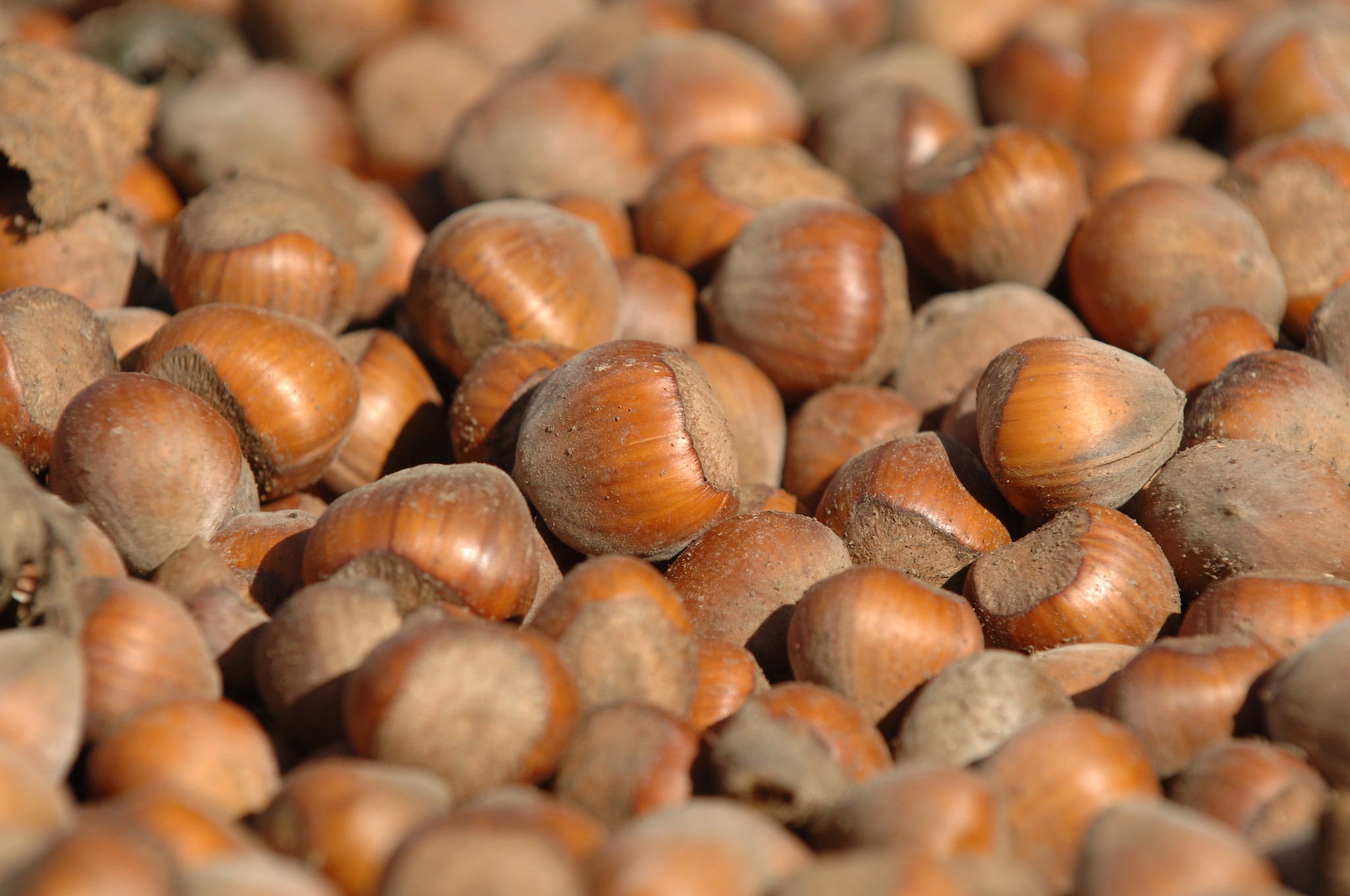Hazelnut, walnut or chestnut trees in your home orchard can keep you supplied with nuts for months if you know the best ways to harvest, handle and store them.
Harvesting hazelnuts means gathering them as they fall from the trees – before autumn rains, if possible, said Ross Penhallegon, a horticulturist with Oregon State University’s Extension Service. You can shake branches lightly, but in most cases the nuts will fall on their own.
Walnuts are mature as soon as the husk cuts free from the nut, but usually they are not harvested until rains crack the husk, causing the nut to drop, usually in October. Mature walnuts lose quality rapidly after they have fallen, so gather fallen nuts frequently to prevent mold, discoloration and decay, Penhallegon said.
Chestnuts are mature when they fall naturally from the tree. They ripen in September and October over a period of about two to four weeks. The nuts gain half of their final weight in the final two weeks before falling, so avoid knocking them from the tree. Gather the fallen nuts every few days to preserve quality.
It’s important to know your chestnuts. Take care not to eat horse chestnuts, which are poisonous, Penhallegon said. They are covered with a leathery, sometimes spiny fruit capsule, which contains two or three glossy seeds or nuts. The leaves originate from the same point and are divided like a fan into five to seven large, toothed leaflets, which are four to 10 inches long.
Edible chestnuts have a husk that is covered with sharp, stiff bristles. The husk splits to reveal two or three nuts. The leaves are three to seven inches long, with sharply toothed edges. The leaves grow alternately along the stem.
After harvest, walnuts and hazelnuts should be dried before eating or storage. Begin drying within 24 hours of harvest. You can save drying time if you shell the nuts first.
Air circulation is as important as temperature during drying, Penhallegon said, so dry the nuts on a screen-bottomed tray, in an onion sack or in any other container that will permit free air passage. Optimum drying temperatures are 95 to 105 degrees. If the temperature exceeds 110 degrees, nut quality will be poorer.
Small lots can be dried above a furnace vent or radiator as long as the temperature does not exceed 105 degrees. Walnuts may require three to four days to dry and hazelnuts about two to three days. Nuts can be dried at lower temperatures, but more time is required.
Walnuts are dry enough for storage when the divider between the nut halves breaks with a snap. If the divider is still rubbery, the nut is not dry enough.
Hazelnut kernels are firm at first and become spongy during the drying process. As they approach dryness, they become firm again. The internal color gradually changes from white to a creamy color, starting at the outside. When the color reaches the center of the kernel, the nut is dry.
Unlike hazelnuts and walnuts, chestnuts are a fairly perishable product. They are a high-starch, low-fat food more like an apple or potato than a tree nut. Clean and refrigerate soon after harvest to prevent problems with mold and decay. For short-term storage (no more than three months), refrigerate or freeze fresh chestnuts. To prepare chestnuts for long-term storage, dry them following the instructions for walnuts and hazelnuts. Nuts will be rock-hard when dry.
Whether storing dried nuts (walnuts, hazelnuts, or chestnuts) or fresh chestnuts, the best choice is to store them in a freezer or refrigerator. You also can store them in a cool room (55 degrees or lower) if refrigeration is not possible. However, longevity is lower.
For more information, check out OSU Extension’s guide to Harvesting, Handling and Storing Nuts from the Home Orchard.

